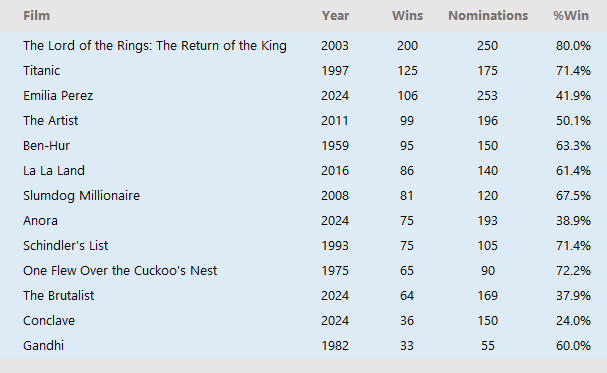Twelve years since the release of Blue Jasmine, we revisit Cate Blanchett’s interviews and insights on the role – not through the lens of pity or tragedy, but with the clarity of time, distance, and impartiality. Blanchett, an actress known for her precision and intelligence, never saw Jasmine as just a woman unravelling. She built the character as a study of survival, of a woman conditioned to believe in a lie so deeply that when it shattered, she had no tools to navigate reality. Blanchett herself described Jasmine not as a villain or a victim, but as a woman who had been raised to believe in the rules of a game she was never truly playing. In interviews, she spoke about Jasmine’s desperation to hold onto something real, her unwillingness to surrender to the system’s demands, and the fine line between resilience and delusion. But here is where the conversation shifts – what if Jasmine’s fate was never just about her personal failure? What if it was deliberate, systematic, and designed to make her an example?
Critics have largely framed Blue Jasmine as a tale of personal downfall, an elegant yet brutal dissection of a woman who could not adapt after losing everything. Mark Kermode, writing for The Guardian, praised Blanchett’s portrayal of a woman on the edge, emphasising Jasmine’s increasing desperation and detachment from reality. Vanity Fair went further, calling it perhaps Woody Allen’s cruellest film, one that revels in the slow, relentless deconstruction of its lead character. This widely accepted reading suggests Jasmine is a tragic, almost pitiful figure – delusional, broken, and ultimately responsible for her own fate. Such an interpretation, however, perpetuates the idea that women like her are bound to self-destruct once stripped of their illusions, reducing her story to a cautionary tale rather than a critique of the structures that led to her downfall. Another prevailing perspective frames Jasmine as someone deeply unwell, a study in slow-burning mental self-destruction. Critics describe the film as a hauntingly resonant reflection on mental illness, likening it to works like Silver Linings Playbook but without the romanticism. Here, Blue Jasmine becomes an exploration of denial, nervous breakdowns, and psychological fragility, where Jasmine’s inability to accept reality is her greatest enemy. The film’s structure – interlacing past and present—further reinforces this idea, as flashbacks gradually unveil the exact moment she “cracked,” making her downfall seem not just a matter of lost wealth but of an identity collapse. This reading, while insightful, risks shifting blame entirely onto her psyche rather than acknowledging the external forces that shaped her existence. The film has also been persistently linked to A Streetcar Named Desire, with many drawing parallels between Jasmine and Tennessee Williams’ Blanche DuBois. Both characters are women whose sense of superiority and illusions clash against the harsh realities they are unwilling to accept. This reading suggests that Jasmine’s downfall was inevitable, that she was destined to be broken by the changing world around her. While the comparison is thematically compelling, it frames Jasmine’s fate as poetic rather than political, placing the burden of her collapse solely on her inability to evolve rather than questioning the broader social forces at play.
Beyond personal tragedy and psychological disintegration, Blue Jasmine has also been viewed through a socio-economic lens, positioning Jasmine as a symbol of the privileged elite who lost everything in the wake of financial scandals. Publications such as Vanity Fair note that the film engages with class in a way that is rare for Allen’s work, contrasting Jasmine’s past luxury with her present displacement in a working-class environment. Jasmine, even when destitute, still clings to the belief that she belongs to the world of the wealthy, resisting adaptation to a reality she considers beneath her. This interpretation removes personal sympathy and instead casts her as a figure of karmic justice – one of many elites who, having lived off illusions of power and privilege, were bound to fall. Yet beneath all these readings lies an angle that few critics have explicitly articulated – one that sees Jasmine’s downfall not as personal failure or symbolic reckoning, but as a demonstration of what happens to women who refuse to comply. Jasmine was raised to believe that marrying well and living elegantly was the highest form of success, a notion that disintegrated once Hal was exposed. Her decision to turn him in was not just an act of revenge but a disruption of the very structure that had sustained her status. The system, in response, ensured that she paid the price. The final scene is often read as her complete descent into madness, yet it can also be understood as something else entirely – a rejection of the world that never truly accepted her in the first place.
Jasmine’s fate is not about personal weakness; it is about what happens to women who refuse to be silent. The system made sure that Hal’s betrayal ruined her more than it ruined him. Her supposed “insanity” is simply what occurs when a woman realises, too late, that she was never meant to hold real power. Most critics engage with Blue Jasmine through lenses of mental illness, class critique, and tragic inevitability, but in doing so, they subtly absolve the system of its role in her downfall. By making Jasmine a singular case rather than a symptom of a much larger design, they fail to acknowledge the full weight of her story. Was she a victim of her own delusions? Perhaps, but those delusions were ingrained by a structure that dictated what success should look like for a woman of her standing. Did she bring her fate upon herself? Possibly, but why does the system always ensure that women suffer more than the men who betray them? Was she simply “crazy”? Or was she a woman who saw through the illusion too late and had no means of escape? Is Jasmine supposed to be a symbol of the 1% elite post-crash? The framing her as one of many elites who never developed real-world skills because they lived off illusions of wealth and entitlement, plus pitting her privilege against Ginger’s working-class reality, seem to be exaggerated in deliberation to leave the people she knows, and audience, no sympathy for her. In the end, Blue Jasmine is not about a woman who had her husband cheated on her thus smeared her reputation; it is about a woman who had everything taken from her when she stopped playing the game. And in a world that expects women to quietly rebuild under its conditions, there is no greater transgression than refusing to comply. Critics wanted to pity her, diagnose her, judge her. But the beyond the façade and made-belief, the truth is simpler: Jasmine didn’t break down – she freed herself. Perhaps the truth is, some societies will always perceive that madness.
Analysis of Post-Blue Jasmine Trajectory for Both Actresses:
Cate Blanchett’s Strong Presence in Film Industry
Cate Blanchett’s awards history is a testament to her extraordinary versatility, longevity, and dominance in the film industry. While she had already established herself as one of the most celebrated actors of her generation before Blue Jasmine, her performance in the film cemented her status as an unparalleled force in cinema, capable of commanding the most prestigious accolades. The release of Blue Jasmine (2013) marked a defining moment in Blanchett’s career. She won her second Academy Award, this time for Best Actress, after previously winning Best Supporting Actress for The Aviator (2004). The role also earned her a Golden Globe, a BAFTA, and a Screen Actors Guild (SAG) Award, making her one of the few actors to achieve a clean sweep across major awards for a single performance. Critics and industry peers alike recognised her portrayal of Jasmine Francis as one of the most complex and psychologically rich performances of modern cinema, blending elements of tragic comedy, social critique, and raw emotional depth. Thanks to Blue Jasmine, Blanchett joined an elite group of actors with multiple Oscar victories, reinforcing her reputation as a performer whose presence elevates any project she undertakes. After Blue Jasmine, Blanchett continued to receive consistent awards recognition, particularly for roles that tackled power, identity, and self-destruction. Carol (2015) earned her another Academy Award nomination, as well as nominations for the BAFTA, SAG, and Golden Globe Awards. Cate Blanchett was also in 2018’s Ocean’s 8, along with Sandra Bullock and Helena Bonham-Carter, as Lou Miller, who absolutely steals the show. TÁR (2022) marked her most recent Oscar nomination, where she played a powerful yet deeply flawed composer, adding another BAFTA win and a Golden Globe victory to her collection. This era of her career reinforced her ability to portray women navigating high-stakes environments, whether it was Jasmine’s financial collapse, Carol’s restrained longing, or Lydia Tár’s systemic downfall. Unlike many actors who peak after winning an Oscar, Blanchett has continued to remain at the forefront of high-calibre filmmaking. While Blue Jasmine was an undisputed career peak, her choices post-2013 indicate that she is still expanding her range, not resting on past successes. Her willingness to challenge herself, whether in Shakespearean theatre (The Present), genre films (Thor: Ragnarok), or experimental cinema (Manifesto), keeps her in an elite league of artists who transcend industry trends. Her legacy is now one of both artistic mastery and strategic career-building, ensuring that her influence on film will outlast fleeting Hollywood cycles. With a string of upcoming projects, including Rumours (2024) and Black Bag (2025), Blanchett remains at the pinnacle of the industry, proving that her best work may still be ahead.
Sally Hawkins was left out in Paddington in Peru
Sally Hawkins’ post-Blue Jasmine career showcases a fascinating mix of indie prestige films, transformative lead roles, and carefully chosen commercial projects, with a particular emphasis on complex, quiet, and emotionally rich characters. Unlike Blanchett, who expanded into producing and large-scale Hollywood films, Hawkins’ trajectory is one of deep character work, vulnerability, and understated brilliance. The Shape of Water (2017) solidified her as an actress capable of leading complex, silent performances, playing Elisa, a mute janitor who falls in love with a creature. This role, deeply expressive yet wordless, earned her an Oscar nomination and cemented her ability to convey immense depth through subtle gestures and facial expressions. Godzilla (2014) and its sequel Godzilla: King of the Monsters (2019) placed her in a supporting scientific role, grounding the otherwise fantastical premise. The Paddington series (2014, 2017) brought her into the world of family-friendly storytelling, where she played Mary Brown, offering warmth and maternal charm. A Boy Called Christmas (2021) and Wonka (2023) further solidified her presence in magical, whimsical narratives, reinforcing her ability to shift between deeply human dramas and fantastical escapism. Her departure from Paddington in Peru (2024) is notable. Instead of reprising her beloved role as Mary Brown, the character is now played by Emily Mortimer, signalling either a scheduling conflict or a shift in creative direction for the franchise. Given her deep connection to the Paddington films, this absence leaves a notable gap in the series. Eternal Beauty (2019) saw her playing Jane, a woman navigating schizophrenia and familial rejection, offering one of her most psychologically layered performances. Spencer (2021) positioned her opposite Kristen Stewart as Maggie, Princess Diana’s trusted confidante, in a film deeply rooted in psychological unravelling and emotional fragility. The Lost King (2022) showcased her in a more determined, obsessive role, as Philippa Langley, the amateur historian who helped rediscover Richard III’s remains. These films explore characters who exist on the margins of society, struggle against perception, and push against expectations, mirroring elements of Blue Jasmine but through different lenses—where Jasmine was unravelling due to a system that rejected her, many of Hawkins’ characters exist outside of traditional power structures entirely, struggling to be recognised in the first place. Hawkins has been nominated for two Academy Awards, both for performances that showcase her ability to portray deeply vulnerable yet quietly resilient women. Best Supporting Actress nomination for Blue Jasmine (2014), where she played Ginger, a working-class woman caught between reality and her sister’s illusions. Best Actress nomination for The Shape of Water (2018) solidified her ability to carry a film without dialogue, offering a performance defined by subtlety and expressiveness. Despite these nominations, Hawkins has yet to win an Oscar, which feels like an oversight given the depth of her work. Although Hawkins won a Golden Globe in 2007 for Happy-Go-Lucky and received strong recognition from BAFTA with nominations for Blue Jasmine and The Shape of Water reinforced her credibility as a British talent with international reach. Her upcoming film Bring Her Back (TBA) suggests a shift toward thriller or mystery storytelling, a genre she has yet to fully explore. Given her talent for introspective performances, this could mark an exciting evolution into psychological suspense. She may not be part of the industry’s power structures like Blanchett, but she holds a unique and irreplaceable space in contemporary cinema – one of quiet, undeniable presence. Sally Hawkins’ awards trajectory reflects a career marked by critical acclaim, deeply nuanced performances, and consistent industry recognition, even if she has not yet secured the highest accolades like an Academy Award win. Her nominations and wins across major ceremonies underscore her range and ability to disappear into her roles, especially in character-driven, emotionally intricate films.
AI-generated conclusion:
Blanchett’s Jasmine’s downfall was framed as inevitable, yet in reality, the actress who embodied her rose to even greater power, while the ‘survival’ of the story, Hawkins’ Ginger, remains in Hollywood’s margins. It raises the question: does the industry reward those who unravel spectacularly over those who quietly endure? Blue Jasmine tried to convince us that going-against-the-flow leads to downfall, while realism ensures survival. Blanchett’s post-Blue Jasmine trajectory outright destroys that premise. Jasmine in the film may have lost, but in real life? The Jasmines don’t break. They evolve. And win. And that is the real game.











